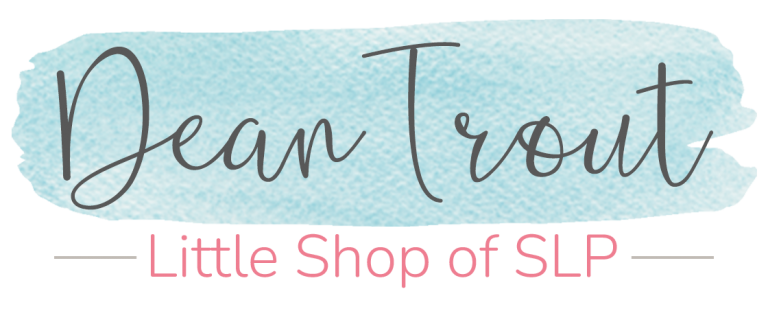I’ll tell you right up front this blog post is about how long one should keep trying a strategy in speech therapy and when to give up and try something else.
“Nothing works with this kid!”
“I’ve tried everything and nothing works.”
Sound familiar? I have seen comments like these so many times on FaceBook and feel so bad for the therapists. So I thought I’d share some advice from my many years of working in public schools.
First let me say don’t give up! You will find something that will work. You just need to stop, take a deep breath, and start thinking critically, logically, and in a systematic way.
Where to begin
The first thing you need to do is ask yourself these questions, so you can make good clinical decisions. (I’m referencing *Bamberg’s aspect’s of theorizing.)
1. Do I have the knowledge I need to work with this child?
If you don’t then get help from someone who specializes in it. In my lifetime, I have found that the big authorities in our field love it when you contact them with questions 🙂
Does one of your colleagues love that area and have expertise in it. An expert doesn’t have to be off in some big city elsewhere. They can be in your own hometown! Sometimes we don’t realize the riches in our own districts.
2. Is your student actively engaged or are they passive?
Brainstorm with others ways that might engage them or seek out what they are interested in and utilize that somehow in your therapy.
3. Is change for this client likely to happen step by step or can steps be merged or skipped.
A big pet peeve of mine is clinicians who rush the process especially with articulation. They want to jump right into producing the sound in isolation and skip the foundational work of ear-training and discrimination. Skipping those skills can make a huge impact in making progress later in the therapy.
4. What is the ideological endpoint for me and this client?
Obviously it is to make them better communicators. To help them function effectively in their environments to the best of their abilities. And to do this in as little time as possible.
5. What is likely to cause change to happen?
A change in strategy, or in delivery, or sometimes even the person.
6. What type of data should be collected. How will it be documented?
What and when changes need to be made.
1. Look at yourself not just your personal knowledge of the disorder, but your method of delivery. What changes can you make in how you are delivering your treatment? Do you need to use more visual, verbal, tactile cues? Are you using terminology they understand? Can you explain it in a different way? Really look at what you are doing and see if maybe the lack of progress is what you are doing.
2. Look at your treatment strategies. Have you tried every possible strategy there is? Really? I bet there is something you haven’t tried. I’m including a simple way to document the strategies you’ve tried and when you tried them to help keep you organized. Brainstorm some strategies with your SLP friends and list them here to try.
3. How long did you attempt each strategy? Did you try it one session and then assume it isn’t working? I like the Rule of Three. Just as we require a child to demonstrate a success rate of 80% over three consecutive sessions, I like to use a strategy for 3 consecutive sessions before assuming it isn’t going to work. Sometimes a strategy didn’t work that day because they just aren’t feeling their best, or they’re tired, hungry, bored…or maybe you are.
4. Let another SLP try! Believe it or not but this is such a critical strategy to try. When Leah Musgrave and I had our private practice this strategy was used very often. Not just in treatment but also in assessment. We quickly learned that a different person can sometimes see things we don’t or can connect with a child better than we can. I realize many SLPs are the sole provider in your districts and you don’t have your best friend working right next door like I did but with technology today you can access another SLP easily!
I hope this post gets you thinking or motivated to try again before feeling so defeated and ready to give up!
Below is a simple cheatsheet I created so that you can keep track of all the strategies you try when you encounter this type of client. This is the documentation you will need when discussing lack of progress with your administrators and parents. However, this may just show you that progress can be made with the right strategy or given adequate time.
Reference: *basicmedicalkey.com/speech-language-pathology-studentss-learning-critical-reasoning/






